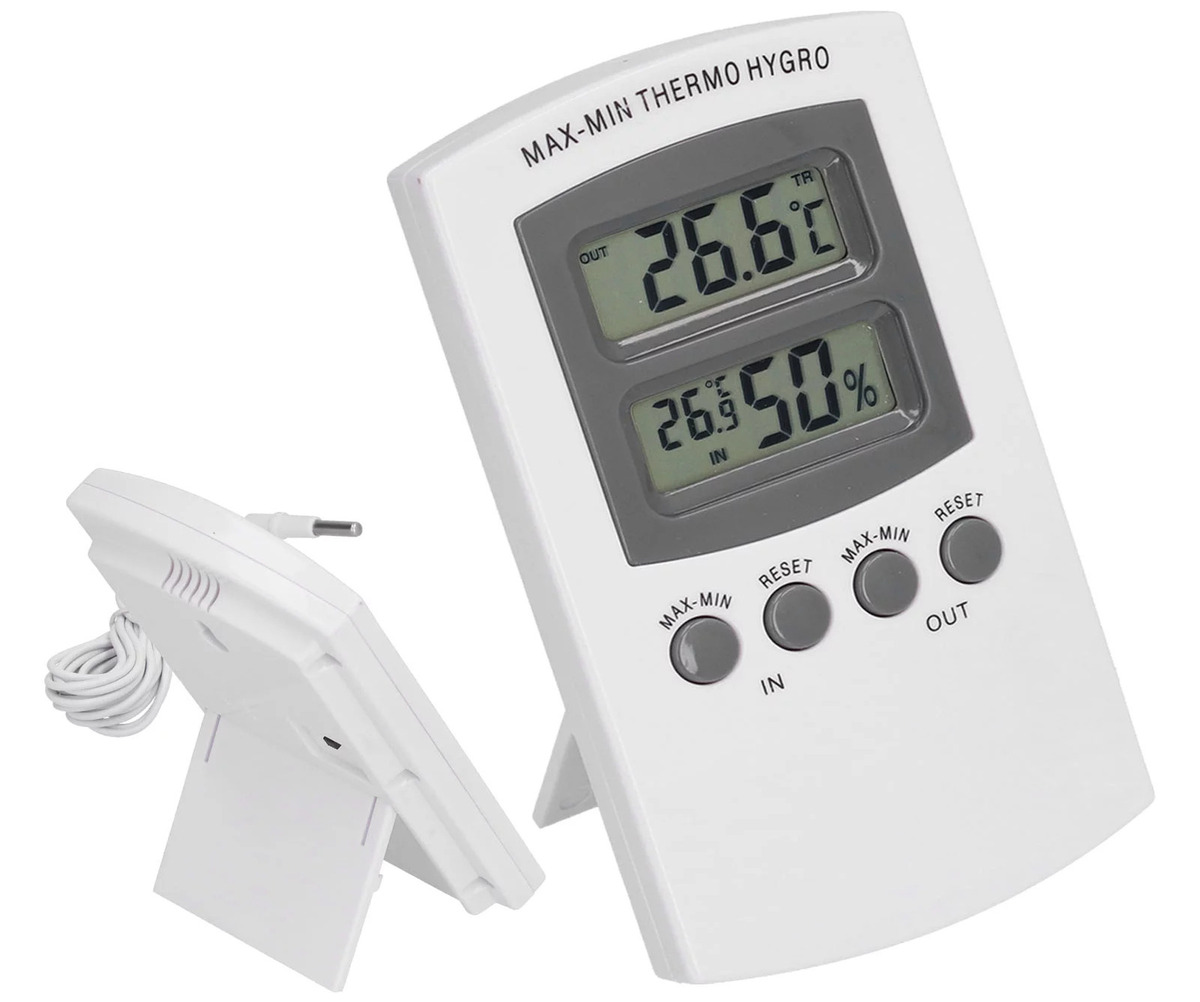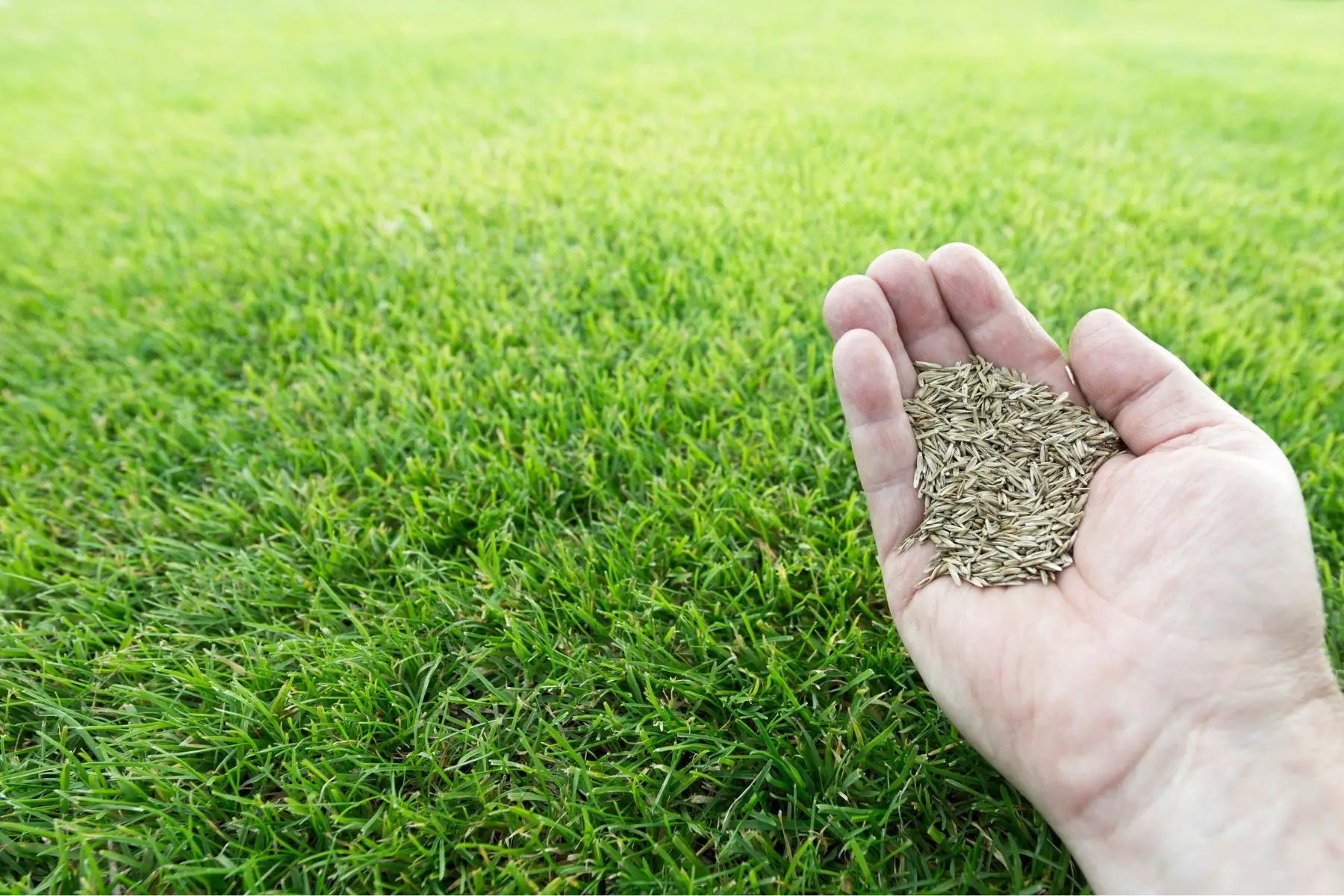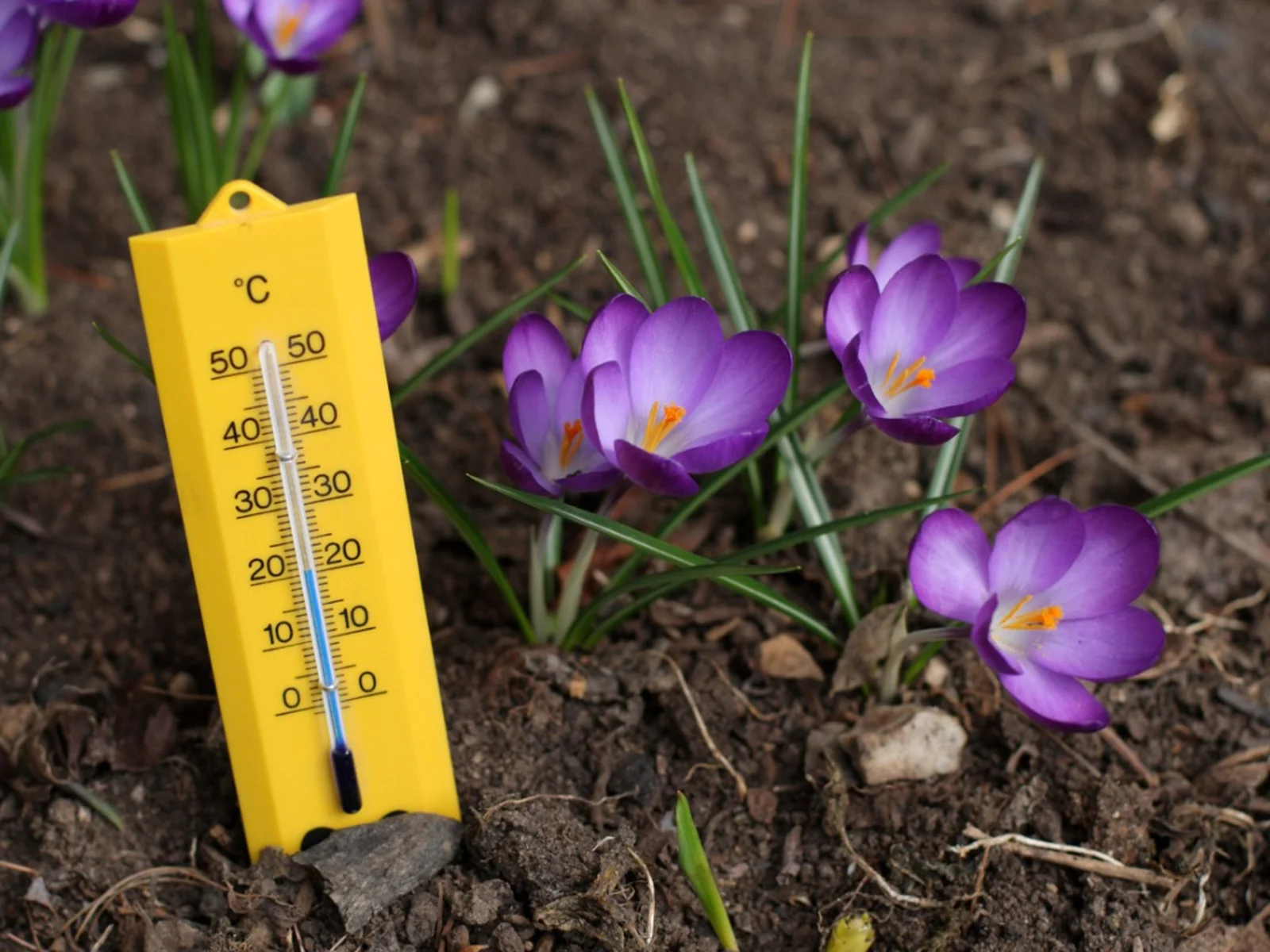Home>Gardening Basics>Understanding Soil>How To Determine Soil Temperature


Understanding Soil
How To Determine Soil Temperature
Published: February 13, 2024
Learn how to determine soil temperature and its impact on plant growth. Understand soil temperature and its importance for successful gardening and farming. Ideal for anyone interested in understanding soil.
(Many of the links in this article redirect to a specific reviewed product. Your purchase of these products through affiliate links helps to generate commission for Chicagolandgardening.com, at no extra cost. Learn more)
Table of Contents
**
Introduction
**
Soil temperature plays a crucial role in the health and productivity of plants. Understanding soil temperature is essential for successful gardening, farming, and land management. This comprehensive guide will delve into the significance of soil temperature, the factors that influence it, methods for measurement, and how to determine the ideal soil temperature for planting.
Soil temperature is a key factor in determining the overall health and growth of plants. It directly affects seed germination, root development, nutrient uptake, and microbial activity. As such, having a solid grasp of soil temperature and its implications is fundamental for anyone involved in agriculture or horticulture.
In this article, we will explore the importance of soil temperature, the various factors that influence it, and the methods used to measure it accurately. Additionally, we will discuss how to determine the ideal soil temperature for different types of plants, enabling you to make informed decisions when planning your planting schedule.
Understanding soil temperature is not only beneficial for professional farmers and gardeners but also for hobbyists and enthusiasts looking to optimize their gardening practices. By gaining insights into the intricacies of soil temperature, you can maximize the success of your planting endeavors, leading to healthier, more bountiful harvests and flourishing green spaces.
Now, let's delve into the significance of soil temperature and how it impacts the world of plants and agriculture.
**
Importance of Soil Temperature
**
Understanding the importance of soil temperature is paramount for anyone involved in agriculture, horticulture, or land management. Soil temperature directly influences various biological and chemical processes within the soil, ultimately impacting the growth and development of plants. Here are some key aspects that highlight the significance of soil temperature:
1. Seed Germination:
Soil temperature profoundly affects the germination of seeds. Different plant species have specific temperature requirements for optimal germination. If the soil temperature is too low, seeds may remain dormant, leading to delayed or uneven germination. Conversely, excessively high temperatures can hinder the germination process. By understanding the ideal soil temperature for specific plants, growers can ensure successful seed germination, setting the stage for healthy crop establishment.
2. Root Development:
The temperature of the soil directly impacts root growth and development. Cooler soil temperatures can slow down root growth, potentially limiting the plant’s ability to access water and nutrients. On the other hand, excessively high temperatures can stress plant roots, impeding their ability to function effectively. By maintaining an optimal soil temperature, growers can promote robust root systems, enhancing overall plant health and resilience.
3. Nutrient Uptake:
Soil temperature influences the availability and uptake of essential nutrients by plant roots. Optimal soil temperature fosters the microbial activity necessary for nutrient mineralization and the release of vital elements. This, in turn, supports healthy nutrient uptake by plants, contributing to their overall vigor and productivity.
4. Microbial Activity:
The activity of soil microorganisms, crucial for nutrient cycling and soil health, is closely tied to soil temperature. Microbial processes, such as decomposition and nitrogen fixation, are significantly influenced by temperature. Understanding these relationships is essential for maintaining a balanced and fertile soil ecosystem.
5. Plant Growth and Yield:
Ultimately, soil temperature directly impacts the growth, development, and yield of crops and plants. By providing an optimal soil temperature environment, growers can maximize the potential of their crops, leading to improved yields and quality produce.
6. Pest and Disease Management:
Soil temperature can also influence the prevalence and activity of certain pests and diseases. Understanding the relationship between soil temperature and pest life cycles can aid in implementing effective management strategies, contributing to overall plant health and productivity.
By recognizing the profound impact of soil temperature on various aspects of plant growth and soil health, growers and land managers can make informed decisions to optimize their agricultural and horticultural practices.
Factors Affecting Soil Temperature
The temperature of soil is influenced by a multitude of factors, each playing a significant role in shaping the thermal environment of the earth beneath our feet. Understanding these factors is crucial for managing and optimizing soil temperature for agricultural and horticultural purposes. Here are the key factors that affect soil temperature:
1. Climate and Weather:
Climate and weather patterns exert a profound influence on soil temperature. The amount of sunlight, air temperature, and precipitation directly impact the thermal properties of the soil. Regions with high solar radiation and warm air temperatures tend to have higher soil temperatures, while areas with cooler climates experience lower soil temperatures.
2. Soil Composition:
The composition and texture of soil play a critical role in determining its thermal characteristics. Soils with high sand content tend to heat up and cool down more rapidly than clay-rich soils. Additionally, organic matter content can influence soil temperature, with well-structured soils often exhibiting better thermal stability.
3. Moisture Content:
The presence of moisture in the soil affects its thermal conductivity and heat capacity. Wet soils conduct heat more effectively than dry soils, leading to more uniform temperature distribution. However, excessive moisture can also lead to cooler soil temperatures due to the energy required for water evaporation.
4. Soil Color:
The color of soil impacts its ability to absorb and retain heat. Dark-colored soils, such as those rich in organic matter, absorb more solar radiation, leading to higher soil temperatures. In contrast, light-colored soils reflect more sunlight, resulting in lower soil temperatures.
5. Vegetation Cover:
The presence of vegetation can significantly influence soil temperature. Plant canopies provide shade, reducing the amount of solar radiation that reaches the soil surface and moderating soil temperatures. Conversely, open, unshaded areas may experience more significant temperature fluctuations.
6. Topography and Slope:
The topography of the land, including its slope and aspect, can impact soil temperature. South-facing slopes receive more sunlight and tend to have higher soil temperatures, while north-facing slopes may be cooler due to reduced solar exposure.
7. Human Activities:
Human interventions, such as land use changes, irrigation practices, and the application of mulches, can alter soil temperature dynamics. Agricultural practices, urbanization, and land development can all influence the thermal properties of the soil.
By considering these factors, growers and land managers can implement strategies to optimize soil temperature for specific crops and land uses, contributing to improved agricultural productivity and environmental stewardship.
Methods to Measure Soil Temperature
Accurately measuring soil temperature is essential for making informed decisions in agriculture, horticulture, and environmental management. Various methods and tools are employed to assess soil temperature at different depths and locations. Here are some common techniques used to measure soil temperature:
1. Soil Thermometers:
Soil thermometers are simple yet effective tools for measuring soil temperature at specific depths. They are inserted into the soil and allowed to equilibrate, providing a direct reading of the temperature. These thermometers come in various designs, including dial-type thermometers and digital probes, and are available in different lengths to accommodate various soil depths.
2. Electronic Temperature Probes:
Electronic temperature probes utilize advanced sensor technology to provide accurate and real-time soil temperature measurements. These probes are often connected to data loggers or monitoring systems, allowing for continuous temperature monitoring at multiple locations within the soil profile. They are particularly useful for research, precision agriculture, and environmental monitoring applications.
3. Infrared Thermometers:
Infrared thermometers can be used to measure the surface temperature of the soil. While they do not provide direct measurements of soil temperature at depth, they offer a convenient way to assess surface temperatures quickly and non-invasively. This can be valuable for identifying temperature variations across a field or garden.
4. Soil Temperature Sensors:
Soil temperature sensors are designed to be buried at specific depths within the soil profile. These sensors are connected to data logging systems and can provide continuous temperature monitoring over extended periods. They are commonly used in agricultural and research settings to track soil temperature dynamics and trends.
5. Automated Weather Stations:
Automated weather stations equipped with soil temperature sensors can provide valuable data on soil temperature, often in conjunction with other environmental parameters such as air temperature, humidity, and solar radiation. These stations offer comprehensive insights into the thermal conditions of the soil within a given area.
6. Satellite Remote Sensing:
Remote sensing technologies, including satellite-based thermal imaging, can be utilized to assess large-scale soil temperature patterns across landscapes. While this approach may not provide fine-scale temperature data, it can offer valuable information for regional and global soil temperature monitoring and modeling.
By employing these methods, growers, researchers, and land managers can gain a deeper understanding of soil temperature dynamics, enabling them to make informed decisions regarding planting, irrigation, and land use management.
Determining Ideal Soil Temperature for Planting
When it comes to successful planting, understanding the ideal soil temperature for different crops and plant species is crucial. The germination and growth of seeds and seedlings are directly influenced by soil temperature, and knowing the optimal range for specific plants can significantly impact the success of cultivation efforts. Here are the key considerations for determining the ideal soil temperature for planting:
1. Crop-Specific Requirements:
Each crop or plant species has unique temperature preferences for successful germination and growth. Consult reliable sources, such as seed packets, agricultural extension resources, or gardening guides, to identify the recommended soil temperature ranges for the plants you intend to grow. Understanding these requirements is fundamental for planning planting schedules and optimizing growing conditions.
2. Seasonal Variations:
Soil temperature fluctuates throughout the year, influenced by seasonal changes in air temperature and solar radiation. Consider the typical temperature patterns in your region and the specific requirements of the plants you wish to cultivate. Adjust planting times to coincide with favorable soil temperature conditions, ensuring that seeds and seedlings have the best chance of thriving.
3. Soil Depth:
Different plants exhibit varying sensitivity to soil temperature at different depths. For example, some seeds require warmer surface temperatures for germination, while others may benefit from slightly cooler conditions at deeper soil levels. Understanding the temperature dynamics at different depths can inform planting practices and help optimize growing environments.
4. Thermal Properties of Soil:
Consider the thermal characteristics of the soil in your growing area. Soil composition, color, moisture content, and organic matter levels can all influence its temperature. Dark, well-drained soils with adequate organic matter tend to warm up more quickly in the spring, providing favorable conditions for early planting and crop establishment.
5. Microclimate Considerations:
Microclimatic factors, such as the presence of windbreaks, shading from nearby structures or vegetation, and the orientation of the planting area, can impact soil temperature. Assess the microclimate of your growing site to identify areas with optimal soil temperature conditions for different crops, allowing you to make strategic planting decisions.
6. Monitoring and Adaptation:
Regularly monitor soil temperature using appropriate tools and methods, and be prepared to adapt planting schedules based on real-time temperature data. By staying attuned to soil temperature dynamics, you can make timely adjustments to optimize planting windows and create favorable conditions for plant establishment.
By considering these factors and leveraging available resources, growers can make informed decisions about the ideal soil temperature for planting, ultimately enhancing the success of their cultivation endeavors.
Conclusion
Understanding soil temperature and its implications is essential for successful agricultural and horticultural practices. Soil temperature directly influences seed germination, root development, nutrient uptake, and overall plant health. By recognizing the significance of soil temperature and the factors that impact it, growers and land managers can make informed decisions to optimize growing conditions and maximize productivity.
Factors such as climate, soil composition, moisture content, and vegetation cover play pivotal roles in shaping soil temperature dynamics. By considering these factors, growers can implement strategies to manage and optimize soil temperature for specific crops and land uses. Accurately measuring soil temperature using various methods, such as soil thermometers, electronic probes, and remote sensing technologies, provides valuable insights into the thermal environment of the soil, enabling informed decision-making.
Determining the ideal soil temperature for planting involves considering crop-specific requirements, seasonal variations, soil depth, thermal properties of the soil, and microclimate considerations. By carefully assessing these factors and monitoring soil temperature, growers can plan planting schedules and create optimal conditions for successful crop establishment and growth.
Ultimately, a comprehensive understanding of soil temperature empowers growers to nurture healthy, productive plants and contribute to sustainable land management. By leveraging knowledge of soil temperature dynamics and employing appropriate measurement and monitoring techniques, growers can enhance their agricultural practices, leading to improved yields, environmental stewardship, and the overall success of their planting endeavors.
With a deep appreciation for the role of soil temperature in the world of plants and agriculture, growers and land managers can cultivate thriving crops, vibrant gardens, and sustainable landscapes, fostering a greener and more bountiful future.



